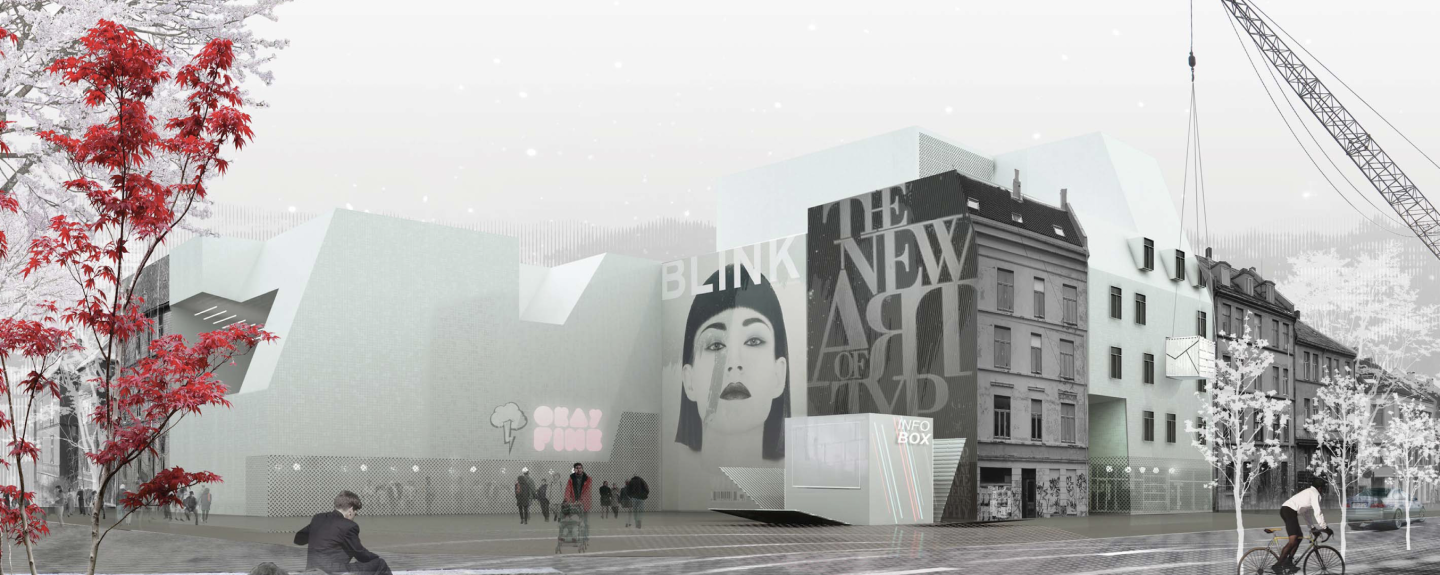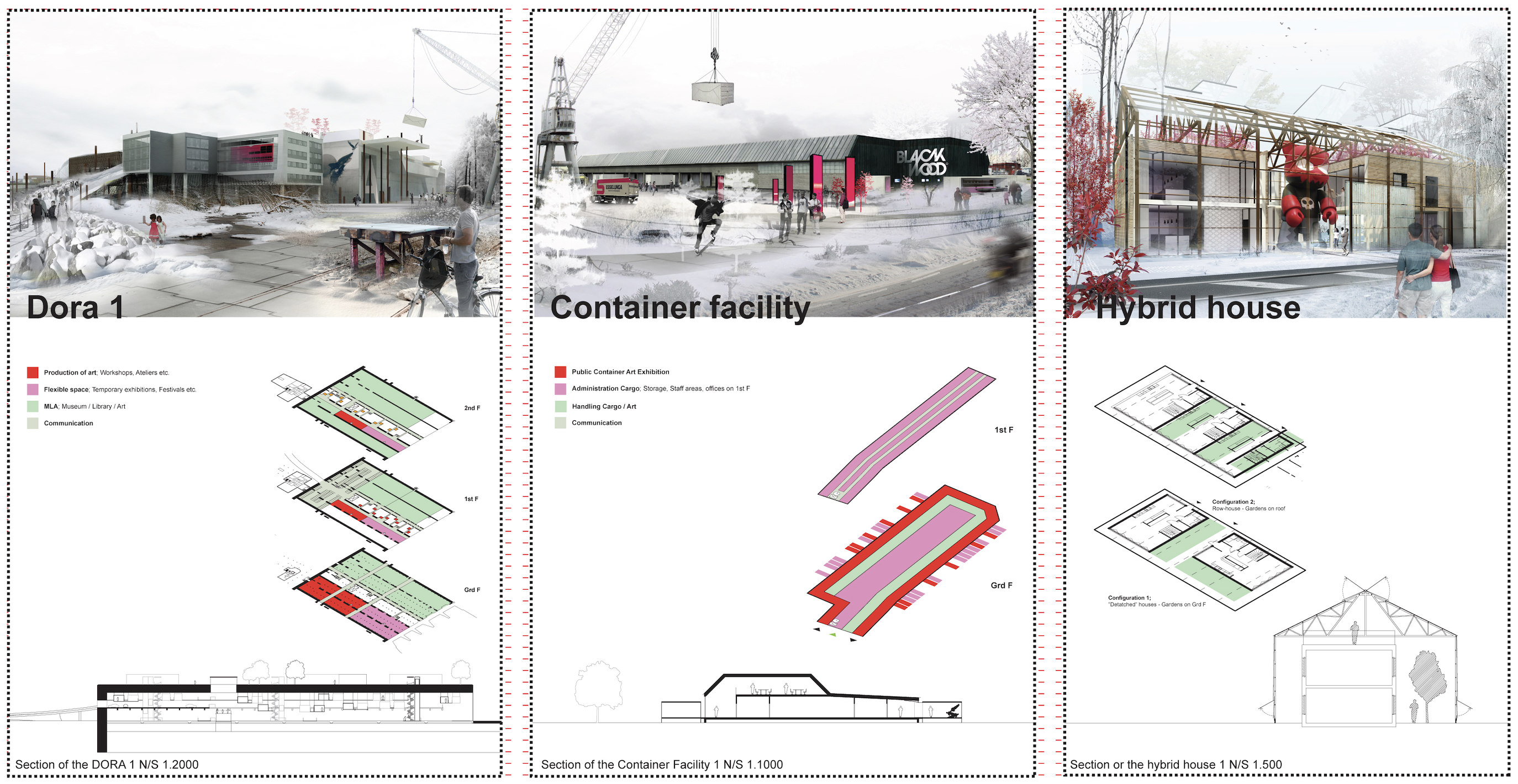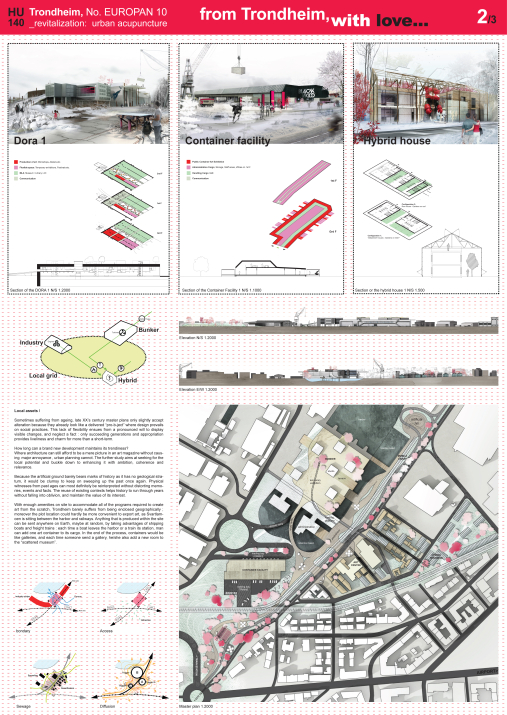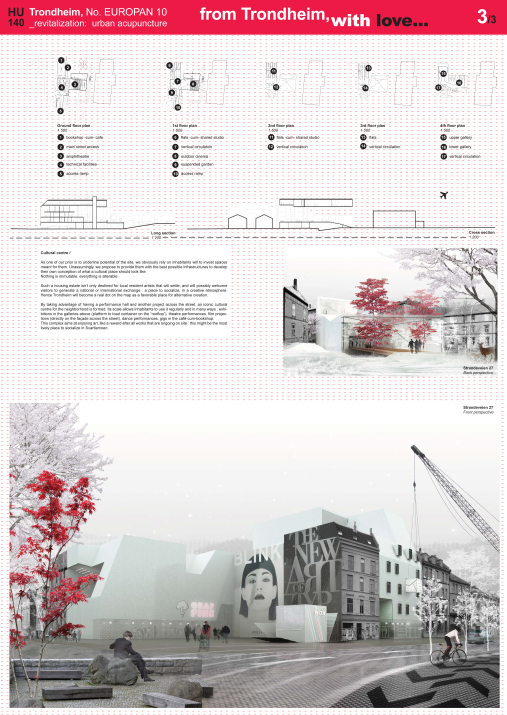Project:
From Trondheim, with love...

About
-
30m3 postcard
What if art could be spread worldwide like a postcard? Would art go back to something unexpected and unpredictable? Could the world become a museum with 1,001 scattered rooms?
Randomly shipping a contemporary art gallery in a 20' container is almost like sending a postcard to someone across the world. You never know how, when or where the person will read it. This person might not even know the place you wrote from, yet they can discover it through an image and your words.
That's how Trondheim unassumingly becomes ubiquitous. That's how Trondheim becomes a cultural hotspot. Then people even start to reply...
Instead of expecting the whole world to come visit, Trondheim decided to travel by exporting its art and culture. Just like city branding, Svartlamoen became a kind of local art label, renowned internationally yet still mysterious for most of us. Some say that residents there simply grow art!
At a time when art is widely consumed and altered by its economic value, Trondheim, without challenging major institutions, claims to be apart from the system by gently proposing an alternative way of thinking by creating, presenting and spreading art.
Local assets
Sometimes suffering from ageing, late 20th century master plans only slightly accept alteration because they look like a delivered object, where design prevails over social practices. This lack of flexibility ensues from a pronounced will to display visible changes and neglect a fact: only succeeding generations and appropriation provide liveliness and charm for more than the short-term.How long can a brand new development maintain its trendiness? Where architecture can still afford to be a mere picture in an art magazine without causing major annoyance, urban planning cannot. A further study aims at seeking for the local potential, and buckling down to enhancing it with ambition, coherence and relevance.
Because the artificial ground barely bears marks of history, as it has no geological stratum, it would be clumsy to keep on sweeping up the past once again. Physical witness accounts from past ages can most definitely be reinterpreted without distorting memories, events and facts. The reuse of existing contexts helps history to run through years without falling into oblivion, and maintains the value of its interest.
With enough amenities on site to accommodate all of the programmes required to create art from scratch, Trondheim barely suffers from being enclosed geographically. Moreover, the plot location could hardly be more convenient to export art, as Svartlamoen sits between the harbour and railways. Anything that is produced within the site can be sent anywhere on Earth (maybe at random) by taking advantage of shipping boats and freight trains. Each time a boat leaves the harbour or a train its station, it is possible to add one art container to its cargo. In the end, containers would be like galleries, and each time someone sent a gallery, he/she would also add a new room to the “scattered museum”.
Cultural centre
As one of our priorities is to underline potential of the site, we obviously rely on the inhabitants’ will to invest in spaces meant for them. Unassumingly, we propose to provide them with the best possible infrastructure to develop their own conception of what a cultural place should look like.
Nothing is immutable, everything is alterable.
Such a housing estate isn’t only destined for local resident artists, but could potentially welcome visitors to generate a national or international exchange, providing a place to socialize in a creative atmosphere. As a result Trondheim will become a dot on the map as a favourable place for alternative creation.By taking advantage of a performance hall and another project across the street, an iconic cultural centre for the neighbourhood is formed. Its scale allows inhabitants to use it regularly and in many ways: exhibitions in the galleries above (platform to load container on the “rooftop”), theatre performances, film projections (directly on the façade across the street), dance performances, gigs in the café/bookshop. This complex aims at enjoying art, like a reward after all the ongoing work at the site. This might be the liveliest place to socialize in Svartlamoen.

-
The jury was intrigued by this proposal due to the proposed building for an art centre at an in-fill site in Svartlamoen. The competitor extended the competition site for the building proposal at Strandveien 27 to the adjacent site in the north- east – occupied today by a multipurpose space. Instead of only providing additional facilities for the black-box theatre on the plot, as requested by the brief, they chose to replace the theatre altogether with a new building of a much larger volume. The proposed arts centre includes a theatre, outdoor cinema, exhibition space, bar and apartments. The L-shaped building wraps around an existing building creating a small square at Strandveien. A passage through the building connects Strandveien with Jernbanegata via a covered outdoor “event terrace”.
The jury appreciates the bold architectural statement of the arts centre and sees much potential in the proposed square as a new public space in which to integrate various public programmes. However, the jury criticises the fact that the entrance of the theatre does not activate the square. The competitor shows interest in complex spatial organisations, but does not seem able to master them. The jury discovered many inconsistencies between the provided imagery, the plans and their potential real-life application . Considering the climate and light conditions of Trondheim, the quality of the apartments and the ‘event terrace’ were discussed as being highly problematic. The rather tight and complicated circulation for public programmes and apartments was also less than optimal. Finally, the suggestion to demolish the theatre and rebuild it in the same spot is unrealistic given the small amount of additional floor area created and the cost it would incur on the Svartlamon community.
-
Remy Bardin
Leo Thafvelin
Guillaume JounetContact information:
www.holduparchitecture.comREMY BARDIN- 1983, Paris, France
Educated in both France (ENSAA- MA & ENSAPLV) and Chile (UDP), Remy worked for diverse practices in Paris (BBCF, RH+) and Santiago (GMM) and is “taking the plunge” on his own with Guillaume at present time.LEO THAFVELIN- 1979, Stockholm, Sweden
Art history studies in Sweden (SU) and architecture in Sweden and Japan (KTH & TITECH), currently working in Stockholm (HMXW Arkitekter).GUILLAUME JOUNET- 1982, Paris, France
Educated in both France (ENSAAMA & ENSAP- LV) and Japan (TITECH), Guillaume ended up working in Paris (=PLAN01, K, SOA) and London (WHAT) before starting up his own architecture practice with Remy in 2010.




